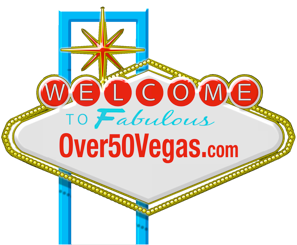- About Over50Vegas
- How did Las Vegas become Las Vegas?
- Observations by Charles "Pop" Squires- Las Vegas Pioneer and Publisher
- Books and References Sites
- Las Vegas Phonebook and City Directories of Bars, Casinos and Hospitality Properties
- Casino Collectible Shows & Local Meetings
- Visit the ChipGuide
- Visit the Museum of Gaming History
- Visit the Casino Chip & Gaming Token Collectors Club, Inc.
- Sitemap by name of property
- Sitemap by address of property
- Click here to request page update notifications
- Contact Over50Vegas
219 N. 1st St.
Las Vegas, NV
Arizona C
l
ub (Hotel)
1905 to the 1940's
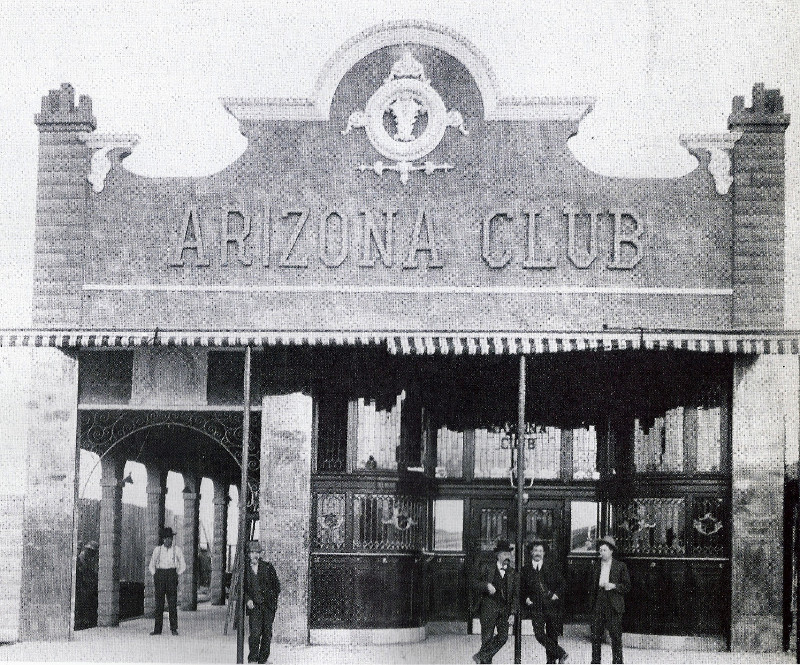
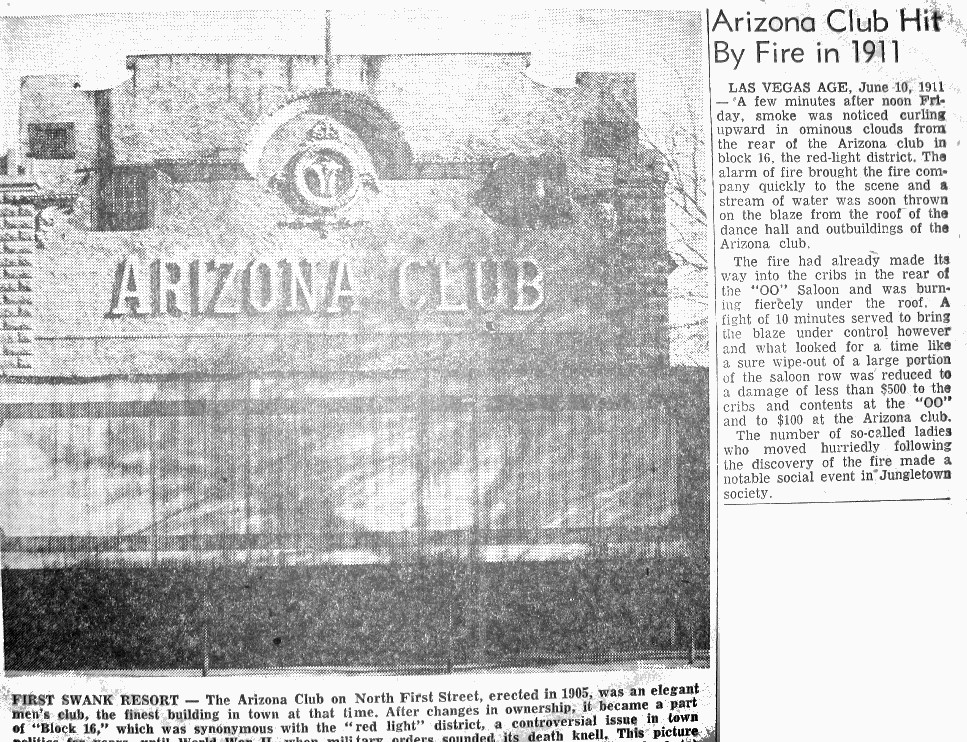
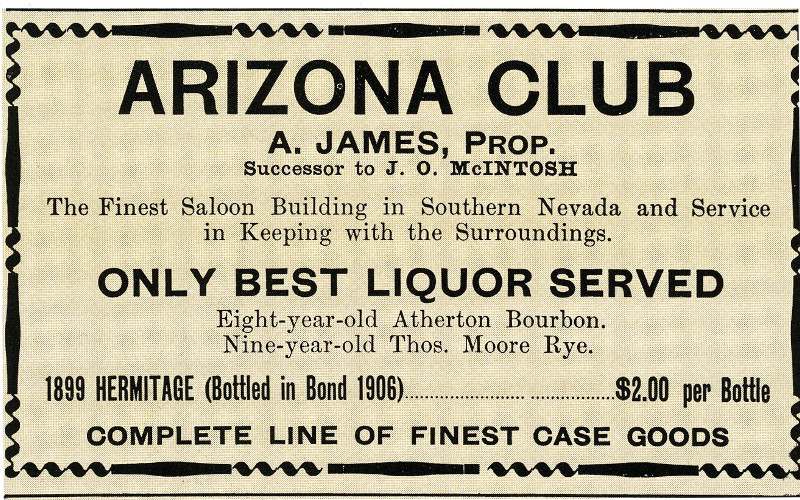
The Arizona Club (Hotel) was open from 1905 through sometime in the 1940's. When gambling was legalized it was licensed for slots and 21. It was located in the "red light" district known as Block 16 so it's a safe bet there were plenty of games running prior to the change in the law.
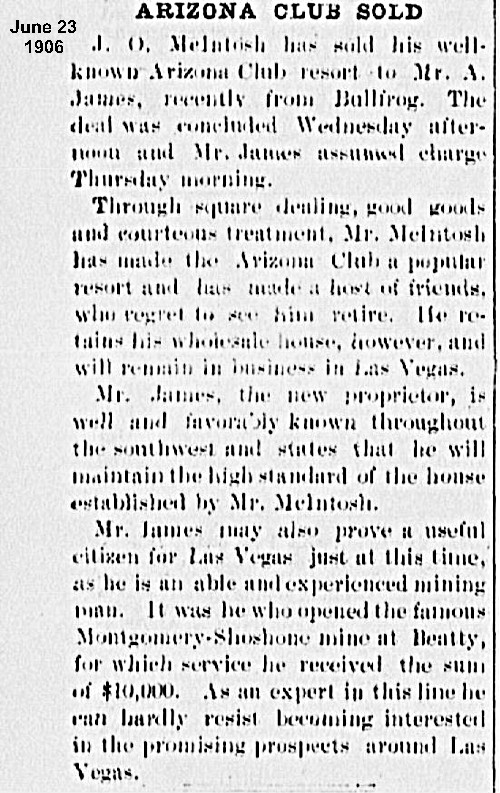
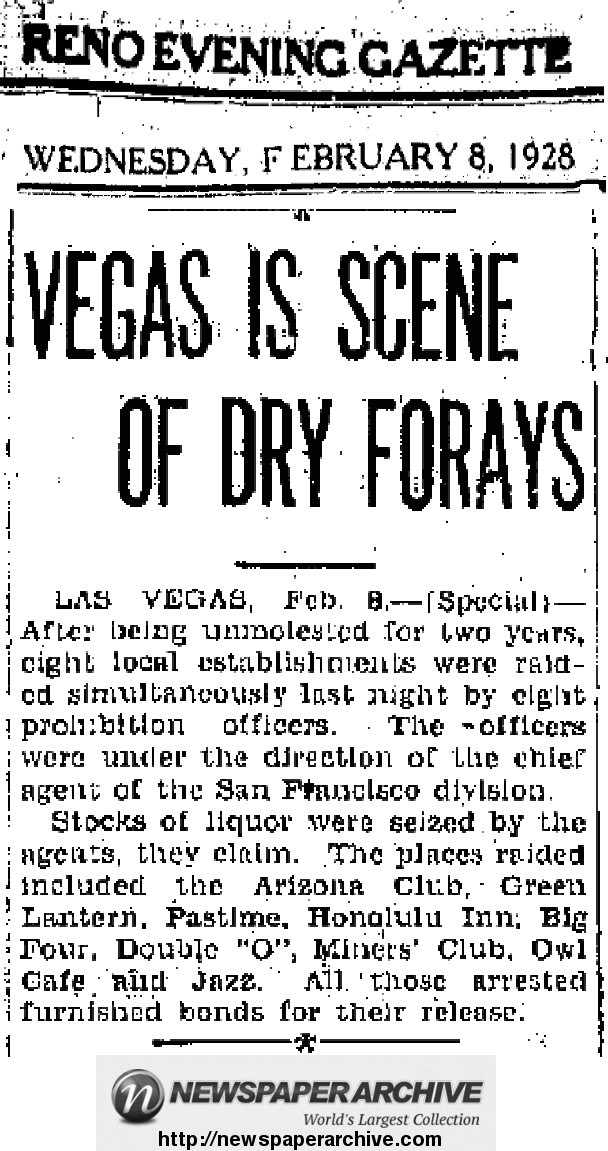
This article points out that bars in Las Vegas were left unmolested for two years while liquor sales in the country were outlawed. Then eight establishments were raided simultaneously by eight prohibition officers.
The places raided included the
Arizona Club, Green Lantern,
Pastime, Honolulu Inn,
Big Four, Double "O",
Miners' Club, Owl Cafe,
and Jazz.
All those arrested
furnished bonds for their release.
J. O. McIntosh sells
the Arizona Club to
A. James in 1906
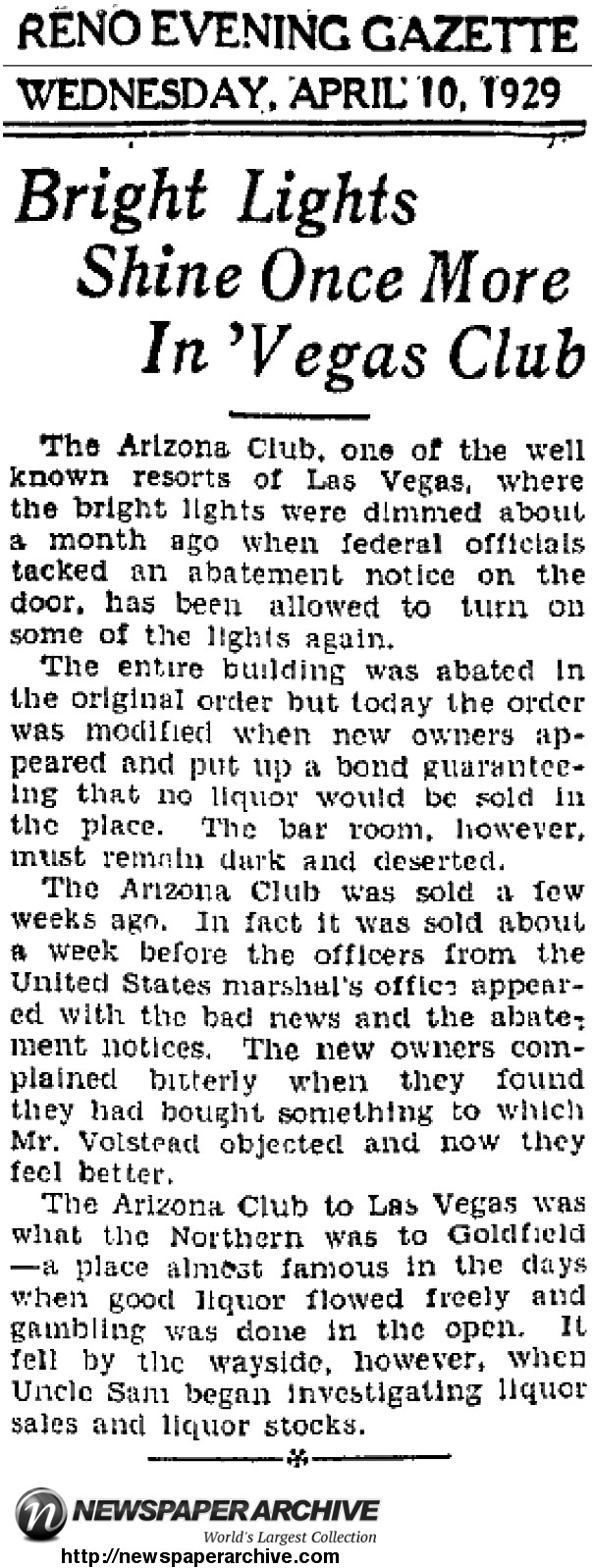
Prohibition, known informally as the Volstead Act, came into force at midnight on January 17, 1920.
It provided that "no person shall manufacture, sell, barter, transport, import, export, deliver, or furnish any intoxicating liquor except as authorized by this act."
This failed social experiment was repealed December 5, 1933.
On April 10, 1929 the Arizona Club was again having problems with "Mr. Volstead's men" as it was shut down for selling illegal liquor.
Two years later.......
FEBRUARY 23, 1931
The Arizona Club,
one of southern Nevada's most famous sporting resorts, dating as a
gambling palace back to the early
days of Las Vegas, was again locked
tight by court order for a period
of a year as a result of liquor law
violations within its walls.
July 5, 1912 Las Vegas Age
The city attorney was instructed to proceed against A. James, proprietor of the Arizona Club, for the collection
of current saloon license which he had refused to pay.
The Arizona Club license was paid the day following the meeting and legal proceedings dropped.
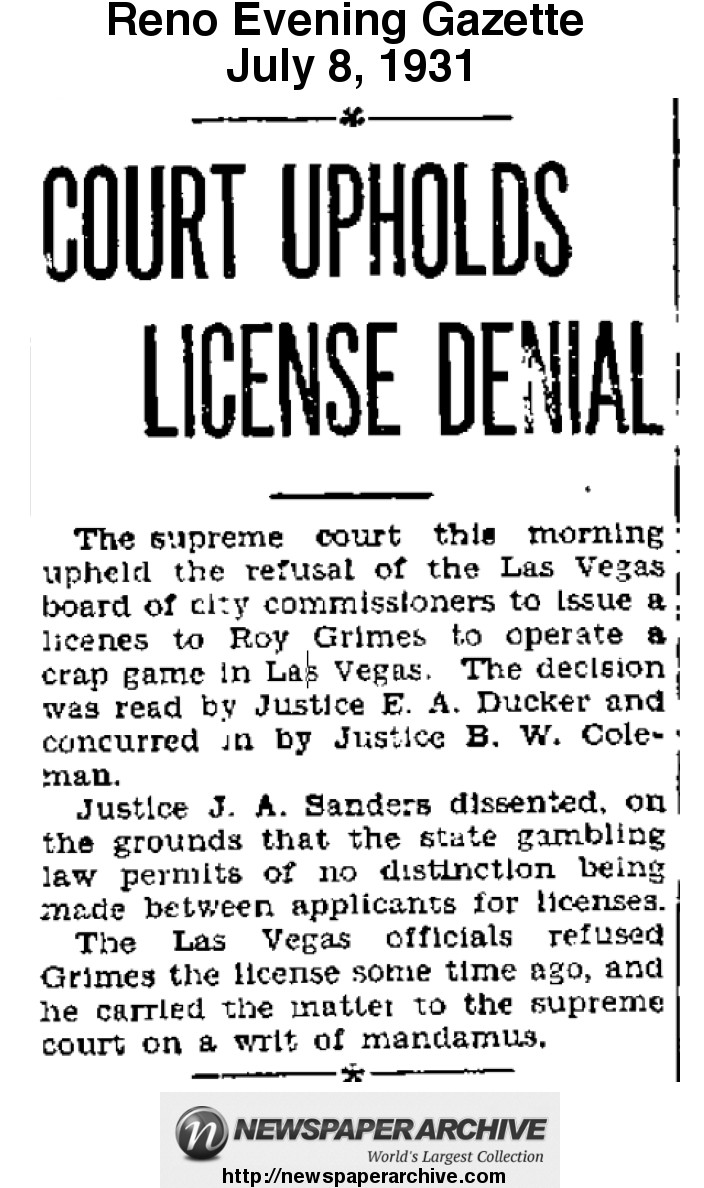
A few weeks after the articicle above appeared limiting gambling
to existing establishments for the time being... a lawsuit was filed.
This is a transcription of an article that was in too poor a condition to be readable.
Nevada State Journal
May 28, 1931
A suit seeking to force the city of Las Vegas to issue a gambling license was heard today in the state Supreme Court.
The action was filed by Roy Grimes, D J McCauley, and R H Davenport, who seek to conduct a dice game in the Pavilion building at Lorenzi's Resort in Las Vgeas.
The three men declare the city officials of Las Vegas, by refusing them a permit, is guilty of discrimination under the state law.
Their application for the gambling license was filed with the city clerk April 7, (1931) and they assert that their application was in due form and that they possess the necessary qualifications prescribed by the laws of the state of Nevada and by the ordinances of the city for applicants for gaming licenses
The Las Vegas officials, in attempting to regulate gambling, March 30 (1931) passed an emergency ordinance with which became effective April 3. (1931) {Note: Gambling was legalized in Nevada on March 19, 1931}
Two days later and prior to the filing of petitioner's license, the city granted gambling licenses to the Boulder Club, Las Vegas Club, A. T. McCarter of the Exchange Club, and Stocker and Morgan at the Northern Club, and then adopted a resolution that no license would be granted in Las Vegas except of those places of business that had had gambling licenses during the previous quarter and that no further or new licenses would be considered until a zone Was established by them for the operation of gambling houses and the policy adopted by the board governing the issuances of new licenses.
April 17, (1931) the board rejected the application of Grimes, McCauley, and Davenport who thereupon applied to the Supreme Court for relief from what they class “unfair and unjust discrimination”.
The petitioners were represented before the Supreme Court by Charles Lee Horsey, while the action of the board of city commissioners of Las Vegas was upheld by F. A. Stephens, city attorney.
Negro Club Licensed
Several days later the board adopted a resolution fixing the policy of the board as contrary to the granting of further gambling licenses for the quarter save to those licensed during the previous three months but providing that members of the Ethiopian race might be granted licenses for the conduct of the game or games in a place catering exclusively to persons of the same race.
In the article below dated July 8, 1931 the applicants lost their battle for licensing at the Supreme Court of Nevada.
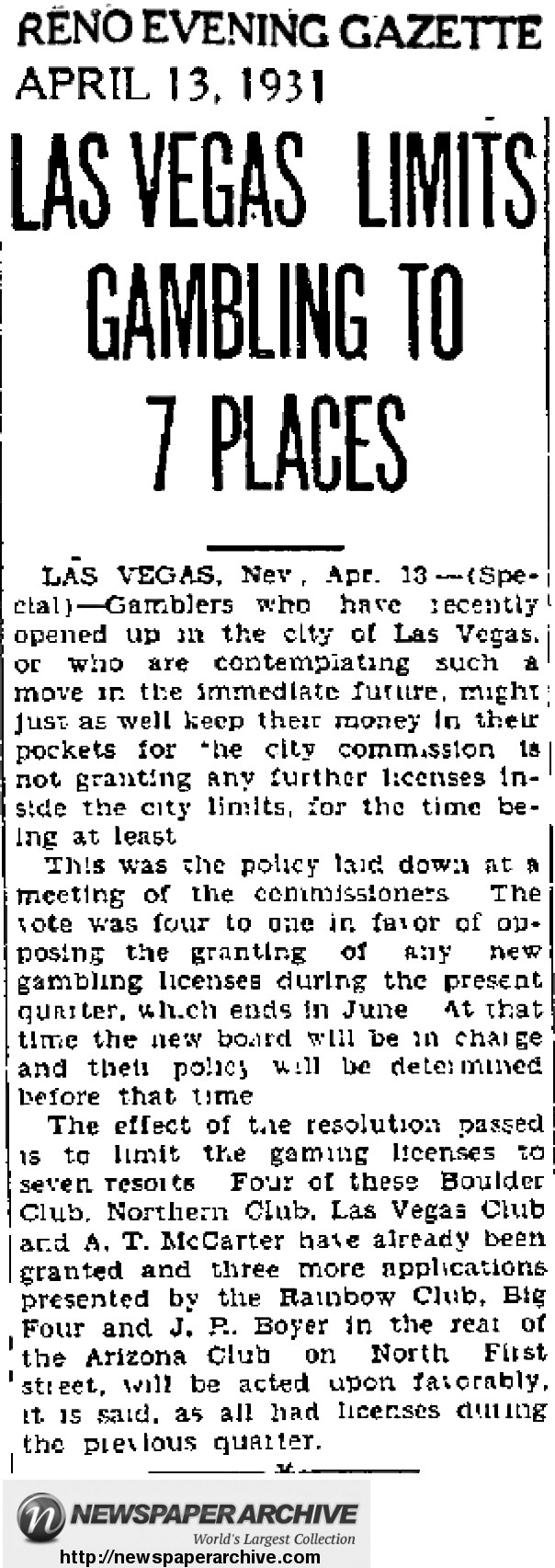
The reference to A T McCarter in the article to the left was for the Exchange Club.
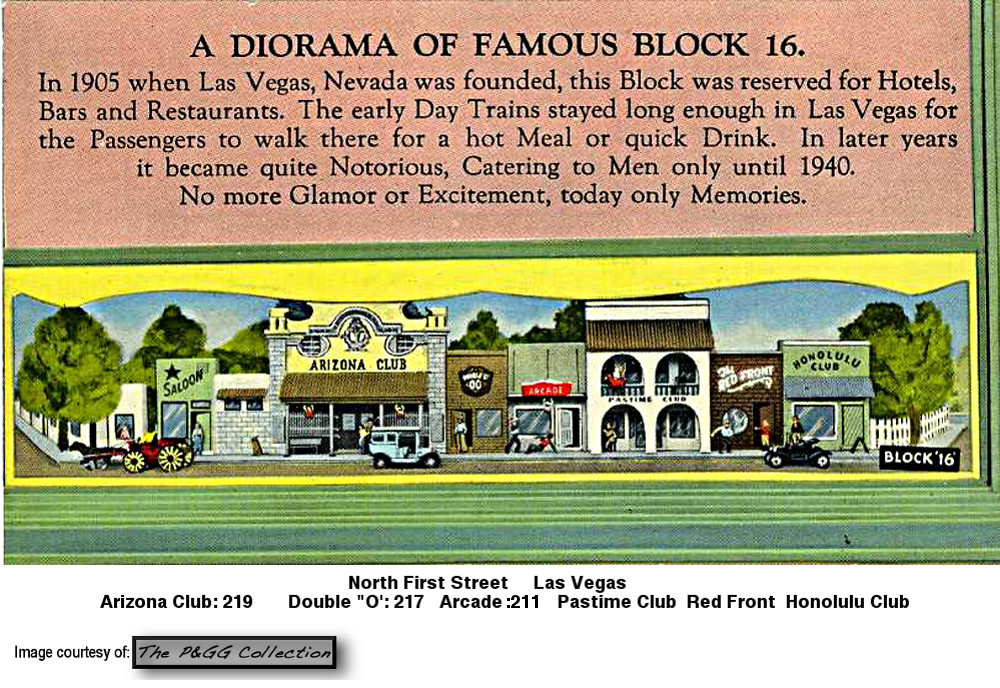
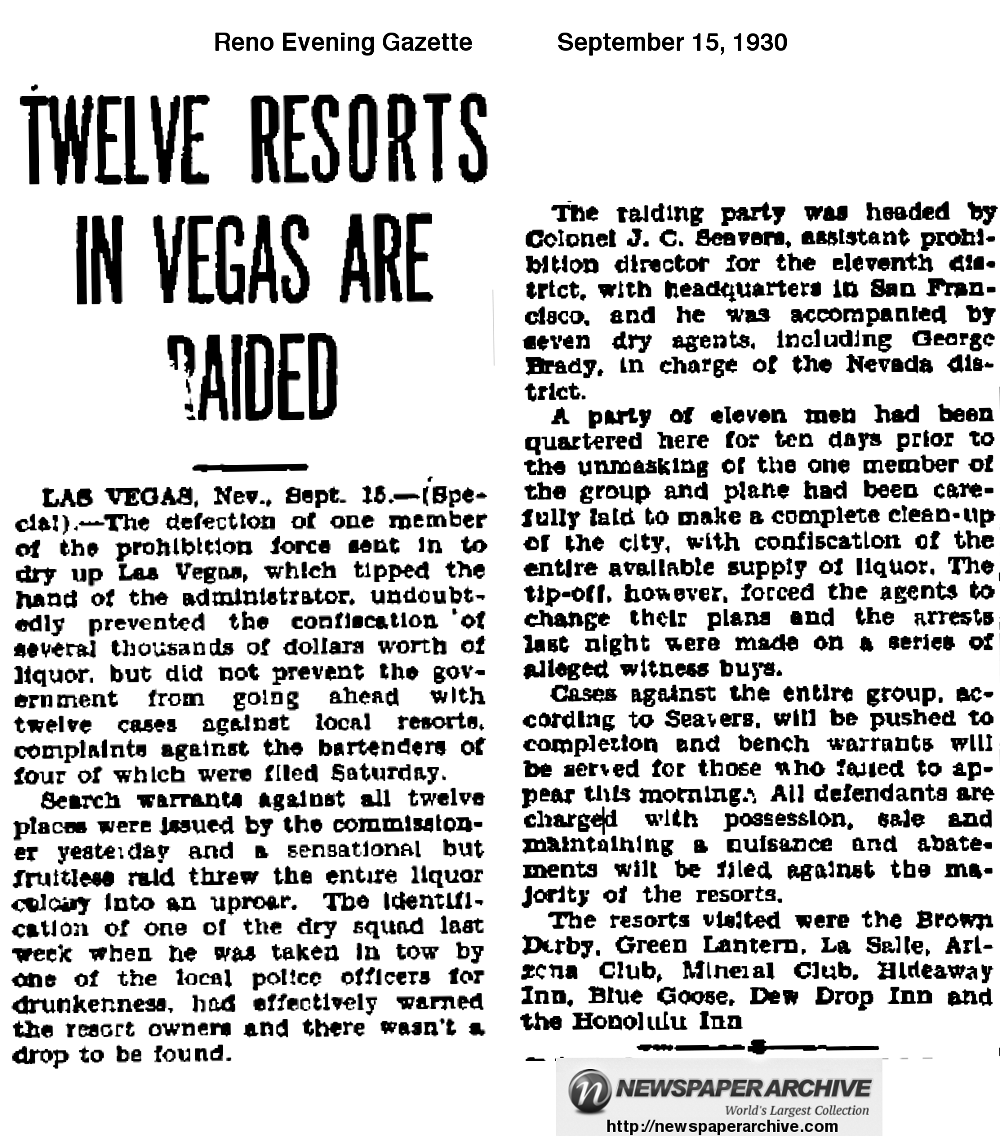
The article below describing another poorly executed raid by prohibition agents mentions a few of the Block 16 extablishmnets shown on the postcard above.

Below is an early set of photographs taped together showing some of the first bars and gambling houses on block 16. The annottated addresses are my notes as best that I have been able to determine.
Block 16 recollections of George L. Ullom:
Mind you, I’m smiling when I say this: I was never a customer in Block Sixteen. [laughs] But I can recall it very well as a small child and then later as an adult, when I was a policeman. Between Ogden and Stewart, on the east side of the street going from Fremont, the first thing would be a large vacant lot. Then came the Honolulu Club, and next was the Red Front, the Jazz, the Double O. There were a couple of others that I just can’t recall. These were houses of prostitution. They probably had bars in them in the very early days, before my recollection; reportedly, they had bars and entertainment prior to Prohibition going into effect. My recollection is that none of those houses of prostitution had a license to sell liquor. When we say houses of prostitution, I don’t suppose that there were over 40 girls involved. Each of those places had a madam as the operator. I imagine that business wasn’t heavy.
On the other side of Stewart Street, at the end of First Street, a lot of the single railroad men had little cabins down by the creek. I imagine that some of the prostitutes’ customers were the single railroad men. Certainly there wasn’t tourist trade to amount to anything. With Boulder Dam starting up, with the people coming in, business did pick up.
The women were not known by people around town. I think that they stayed in their area, and townspeople certainly didn’t frequent the area. Now, maybe some of the men slipped down on occasion. I don’t know! [laughs] But, it wasn’t a part of town that people went through. Oh, in the warmer months the girls would stand out in front of the place to whistle at a possible customer. As teenagers we would drive down that block to see the girls.
There were bars operating in town in the 1920s, and the Prohis [federal agents enforcing Prohibition] would come in. There were several places that sold liquor, and once in a while the Prohis would come in and close them up. I think everybody had something under the counter.
Around 1941 the army air corps advised the city commissioners, “If you don’t declare Block Sixteen closed, we will declare Las Vegas off limits.” The city commission then made a motion to close Block Sixteen. With that, Chief Frank Wait resigned, because he felt that we would be better off having Block Sixteen remain a legalized place for prostitution rather than have streetwalkers. The following day, we went down and informed them all and closed them up. The day after the closing, it seems to me that there were two people that we brought out and took down and arrested, and that was the end of it. Most of these girls—there weren’t too many of them—disappeared, as far as I know. But then it was open field for the hustlers. That’s when we had all of the problems attendant with that end of the business. It was primarily in the city that we had the street hustlers, most of them from out of town.
{excerpted from UNLV Oral History project of George L. Ullom: Politics and Development in Las Vegas, 1930s-1970s by Jamie Coughtry Published: 1989- UNOHP Catalog #151}
Block 16 recollections of Charles W. Alpin:
(ca 1905) The first one on the corner was the Star Saloon that belonged to Victor Matteucci. Now this is all just on the east side of the street because the other side was vacant. That’s why they had the fence up along there. The other side was reserved for the tourists coming, I don’t know. This side here on the corner was the old Star saloon. The next big building was the Arizona Club. And the next big building was the Arcade. And then there was a building there that belonged to Art E. Locker; but then the next building was our building. And that was built in—I think it was in 1905, the latter part, and finished up—I think the early part of the next year— February or March, or somewhere along in there...
….I was going to tell about the prostitution in Block 16. I done the work on the Arizona Club when it was built. The girls upstairs—I think they had seven or eight rooms upstairs—and downstairs on the outside was a place for bowling. You know, they had two alleys for bowling in there......
{Charles W. Aplin: An Old Timer of Las Vegas- University of Nevada Oral History Program - Mary Ellen Glass 1969}

Over50Vegas.com by Over50Vegas.com is licensed under a Creative Commons Attribution-NonCommercial-NoDerivs 3.0 Unported License.
Based on a work at http://over50vegas.com/index.html.
This is a non-commercial, educational, hobby site. Images on this site are from our personal collection and from personal collections of fellow enthusiasts who have shared their scans with us. Other images are noted by source with links to the original. If you feel that any image used here has infringed upon fair use of an image you hold the copyright to, please contact us at the links above and it will be credited or removed at your request.
Sources you might want to visit for more information include:

Search for anything on this site. Click "Advanced" to narrow your search.
